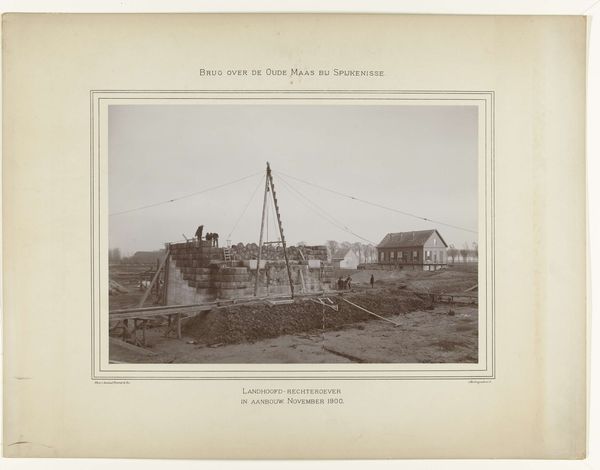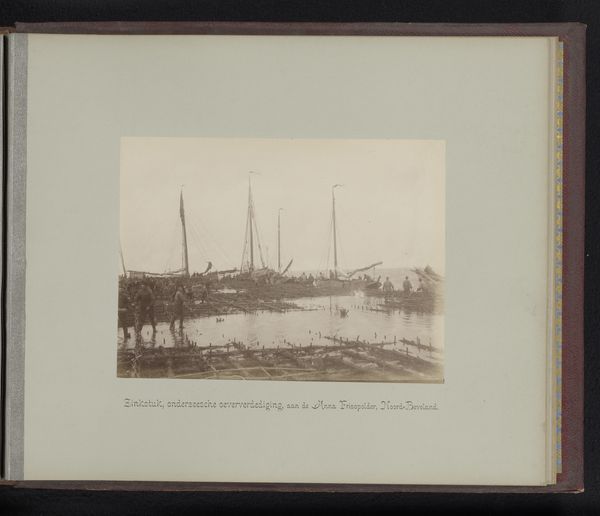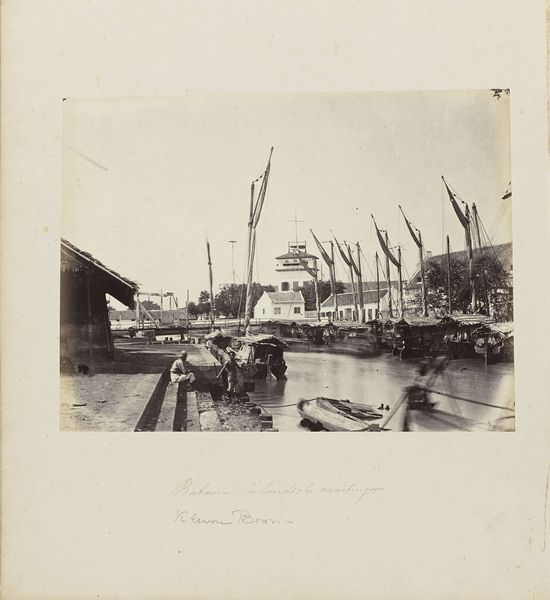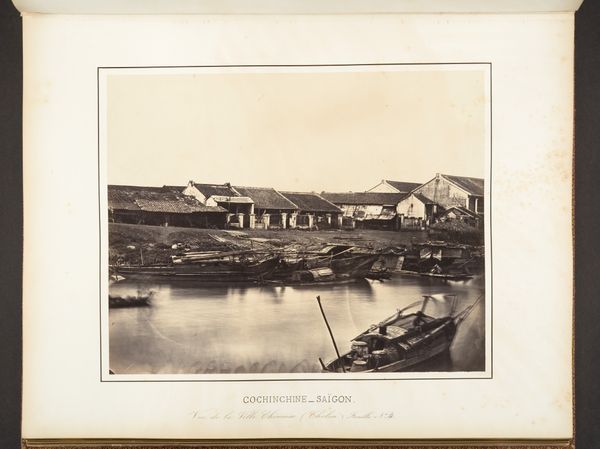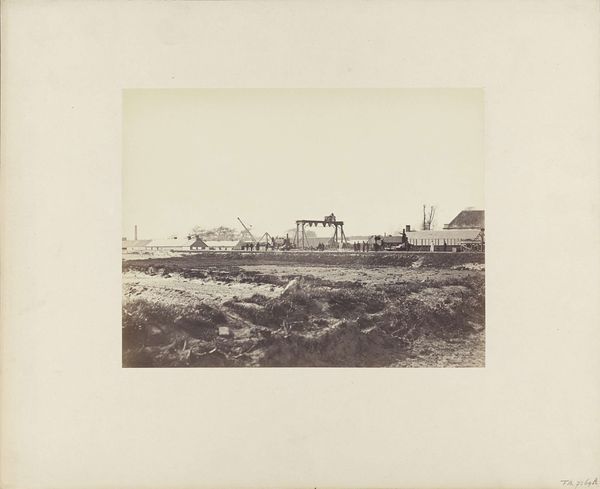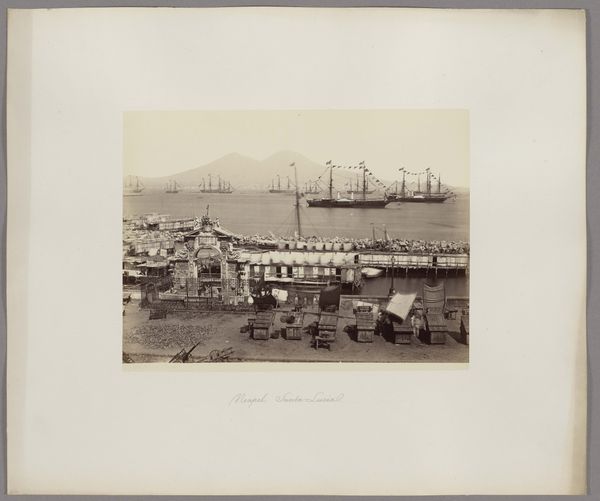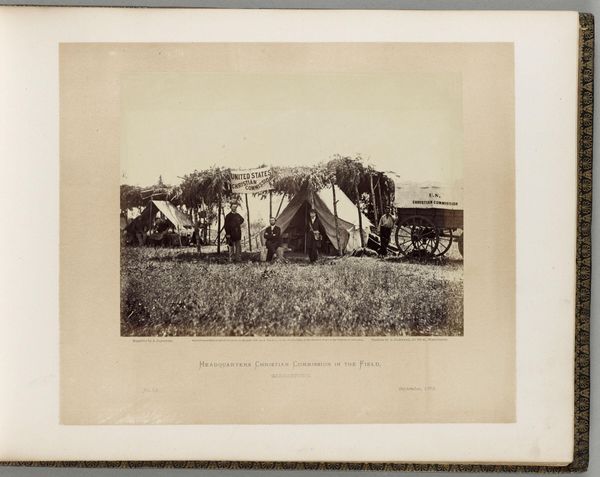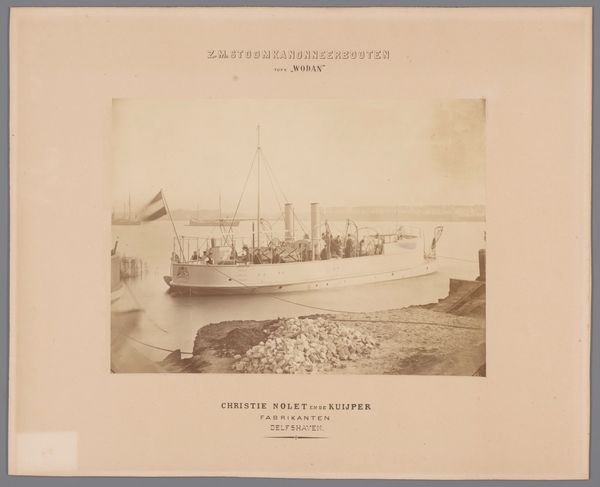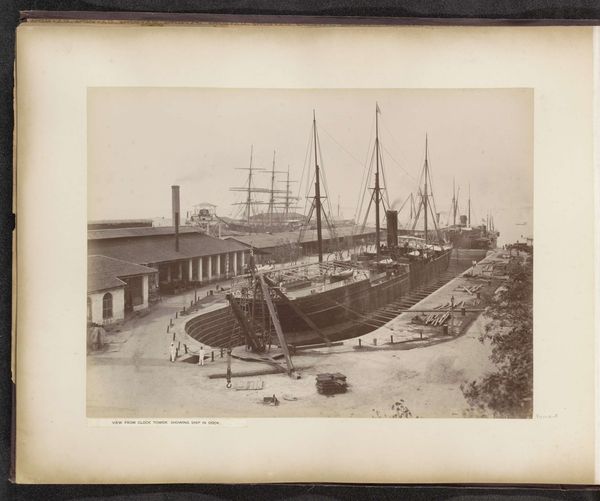
Benedenstoomgemaal met Centrifugaalpompen / Nieuwerkerk aan den IJssel den 15 Junij 1868 Possibly 1868
0:00
0:00
photography, gelatin-silver-print
#
landscape
#
photography
#
gelatin-silver-print
#
realism
Dimensions: height 232 mm, width 260 mm
Copyright: Rijks Museum: Open Domain
Editor: This gelatin silver print, possibly from 1868, captures the Benedenstoomgemaal met Centrifugaalpompen in Nieuwerkerk aan den IJssel, by Jacobus van Gorkom Jr. The scene has such a documentary feel to it, but there is also a stillness. What strikes you most when you look at this image? Curator: The photograph speaks volumes about the intersection of technology and labor within the Dutch landscape. It invites us to consider questions of environmental control and human agency. Look closely at the figures; who do you think is represented in this image? Editor: I see what looks like maybe a group of men, possibly laborers overseeing this pumping station. Curator: Exactly. And in that recognition, what socio-political context do you think surrounds them, specifically regarding labor during this time? Consider the broader implications of land reclamation, right? Who benefits, and perhaps, who might be displaced or exploited in the process? Editor: I guess the benefits would primarily go to the wealthy landowners and agricultural industry and the local farmers. But thinking of the workers…were their lives improved by this technological advancement, or were they further marginalized within an industrializing society? This image shows how technological advancements can also highlight social inequalities. Curator: Precisely! And it prompts us to reflect on the ethics of progress itself. Are advancements always universally beneficial? How might environmental projects perpetuate social stratification, even today? Editor: That’s a lot to think about. I went into this just looking at the historical record, not realizing I could interpret this gelatin silver print to uncover power structures at work in landscape and labor during that time. Curator: Yes. And hopefully this will lead you to consider new ways to observe historical context when we confront art.
Comments
No comments
Be the first to comment and join the conversation on the ultimate creative platform.

